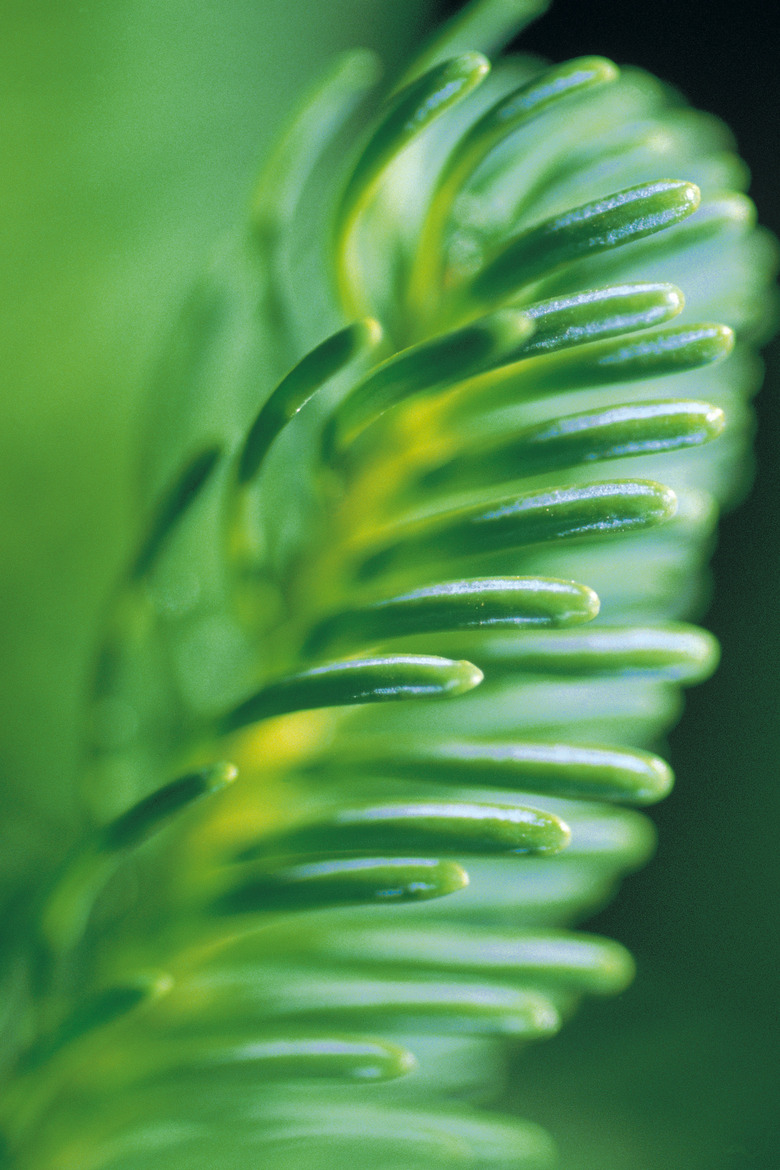Why Is My Alberta Spruce Turning Brown?
Several diseases affecting an Alberta spruce and other species of spruce can be prevented by encouraging an optimal growing environment for the tree. This typically means refraining from watering the needles of the tree, keeping them as dry as possible, and allowing for maximum spacing for air circulation.
Rhizosphaera Needle Cast
An Alberta spruce that is turning brown may be infected by Rhizosphaera needle cast, a disease caused by the fungus Rhizosphaera kalkhoffii. Needles typically turn a purplish-brown color in the second year of infection and may fall from the tree. The disease begins on the lower branches and gradually works its way up and around the spruce. In addition to pruning and removing fallen needles and twigs that harbor the disease, copper-based fungicides are effective in controlling needle cast disease.
Lirula Needle Blight
Lirula needle blight, a product of the fungus Lirula macrospora, requires several years to complete its life cycle, with the fungus overwintering on the needles of the tree. During their second year of infection, normally in late summer, spruce needles begin to take on a yellow or brown color. As the needles age and continue to release fungal spores, they turn a grayish-brown tint and remain attached to the tree for several years.
- Several diseases affecting an Alberta spruce and other species of spruce can be prevented by encouraging an optimal growing environment for the tree.
- Lirula needle blight, a product of the fungus Lirula macrospora, requires several years to complete its life cycle, with the fungus overwintering on the needles of the tree.
Spruce Needle Rust
Spruce needle rust is caused by several different fungal species and initially turns the tips of needles yellow. In cases of severe infection, the Alberta spruce may take on a brown, tan or pinkish color. The disease is accompanied by the dispersion of fungal spores that are so numerous and intense they may coat surrounding vegetation with an orange film and even discolor nearby bodies of water. The damage from spruce needle rust is chiefly cosmetic and rarely kills the tree.
Armillaria Root Rot
Armillaria root rot, a product of the fungus Armillaria, results in the needles of an Alberta spruce turning brown, but this is a small concern when compared to the damage that the root rot is capable of. Entering the tree through the root system, the roots begin to decay and are unable to draw sufficient water and nutrients from the earth. As a result, the entire tree is deprived and needles, along with branches, eventually die and fall away. The disease may kill the entire spruce.
- Spruce needle rust is caused by several different fungal species and initially turns the tips of needles yellow.
- The disease is accompanied by the dispersion of fungal spores that are so numerous and intense they may coat surrounding vegetation with an orange film and even discolor nearby bodies of water.
Other Fungi
Stigmina lautii is commonly called Stigmina needle cast disease and causes a yellowing and browning of older needles of the tree, followed by the complete defoliation of branches by the end of summer. It boasts spore-reproduction centers that appear hairy or feathery. This fungus is typically accompanied by a separate fungus, Setomelanomma holmii, that attacks the twigs of the spruce. It is commonly referred to as spruce needle drop.
